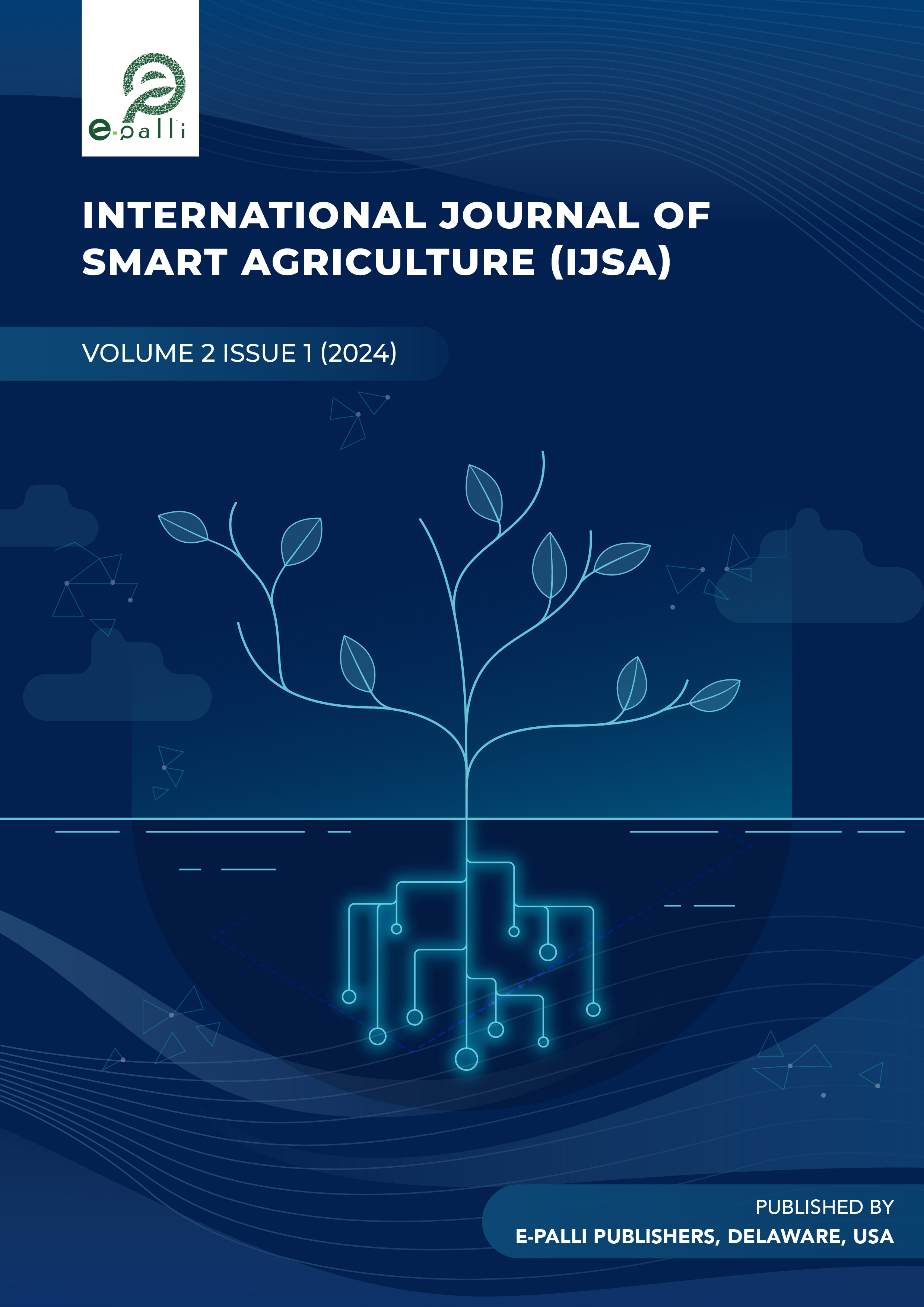Development of Antioxidant-Rich Gummies by Utilizing Pomegranate Juice and Water Chestnut Extract to Boost Immune System
DOI:
https://doi.org/10.54536/ijsa.v2i1.3813Keywords:
Antioxidants, Flavonoids, Gummies, Immune Health, Pomegranate Juice, Water ChestnutAbstract
Consumption at high levels is attributed to health hazards. Pomegranate juice and water chestnut extract possess antioxidant and immune-enhancing properties, making them a healthy gummy alternative to conventional gummies. The aim of this study was the formulation of gummies with antioxidant-rich pomegranate juice and water chestnut extract to enhance their nutritional, sensory, functional properties, and to boost immune system. Pomegranate to water chestnut ratios 50:50, 70:30, and 60:40 along with the control were prepared in three formulations. Proximate, phytochemical, textural, and microbial characteristics were analyzed using standard methods. However, organoleptic properties and shelf-life of the product was also determined. A 9-point hedonic scale was used to evaluate the sensory parameters of the developed product. Proximate analysis showed Sample B (70:30) had the lowest percentage for moisture 18.5%, the highest percentage for protein, 1.3%, and the percentage for carbohydrates, 79.2% leading to a firmer texture. Phytochemical analysis showed Sample B as having the highest percentage total phenolic content with 5.8 mg GAE/g and flavonoid content of 4.1 mg QE/g which led to strong antioxidant activity with 70% inhibition and the lowest IC50 value at 6.2 mg/mL. Texture evaluation showed that Sample B had the highest rating for hardness at 3.5 N, chewiness at 0.8, and cohesiveness at 0.7 of textures, which meant better textural integrity. Microbiological assessment showed that Sample B was the lowest level of microbial activity at 1500 CFU/g after 8 weeks of storage and thus attributed to longer shelf life. The sensory analysis favored Sample B having the highest overall acceptability score of 9, attributed by its good balance of flavors, texture, and mouthfeel. These results establish a suitable sensory appeal, good antioxidant properties, and boosting of immune functionality through the 70:30 pomegranate-to-water chestnut formulation. The developed product can be suggested as a promising functional food product. Its future research lines may include natural sweeteners and clinical trials evaluating long-term health impacts.
References
Ali, M. R., Mohamed, R. M., & Abedelmaksoud, T. G. (2021). Functional strawberry and red beetroot jelly candies rich in fibers and phenolic compounds. Food systems, 4(2), 82-88.
AOAC. (2019). Official methods of analysis of AOAC International (21st ed.). AOAC International.
Baradaran Rahimi, V., Ghadiri, M., Ramezani, M., & Askari, V. R. (2020). Antiinflammatory and anti‐cancer activities of pomegranate and its constituent, ellagic acid: Evidence from cellular, animal, and clinical studies. Phytotherapy research, 34(4), 685-720.
Basu, A., & Penugonda, K. (2009). Pomegranate juice: a heart-healthy fruit juice. Nutrition reviews, 67(1), 49-56.
Cano-Lamadrid, M., Calín-Sánchez, Á., Clemente-Villalba, J., Hernández, F., Carbonell-Barrachina, Á. A., Sendra, E., & Wojdyło, A. (2020). Quality parameters and consumer acceptance of jelly candies based on pomegranate juice “Mollar de Elche”. Foods, 9(4), 516.
Cano‐Lamadrid, M., Nowicka, P., Hernández, F., Carbonell‐Barrachina, A. A., & Wojdyło, A. (2018). Phytochemical composition of smoothies combining pomegranate juice (Punica granatum L) and Mediterranean minor crop purées (Ficus carica, Cydonia oblonga, and Ziziphus jujube). Journal of the Science of Food and Agriculture, 98(15), 5731-5741.
de Moura, S. C., Berling, C. L., Garcia, A. O., Queiroz, M. B., Alvim, I. D., & Hubinger, M. D. (2019). Release of anthocyanins from the hibiscus extract encapsulated by ionic gelation and application of microparticles in jelly candy. Food Research International, 121, 542-552.
Dzhanfezova, T., Barba-Espín, G., Müller, R., Joernsgaard, B., Hegelund, J. N., Madsen, B., Larsen, D. H., Vega, M. M., & Toldam-Andersen, T. B. (2020). Anthocyanin profile, antioxidant activity and total phenolic content of a strawberry (Fragaria× ananassa Duch) genetic resource collection. Food Bioscience, 36, 100620.
Gonçalves, C., Guiné, R., Teixeira, D., & Gonçalves, F. (2015). Evaluation of Bioactive Phenols in Blueberries from Different Cultivars. International Journal of Biological, Food, Veterinary and Agricultural Engineering, 9, 281-284.
Guiné, R., Correia, P., & Florença, S. (2018). Development of jelly gums with fruits and herbs: Colour and sensory evaluation. Journal of International Scientific Publications: Agriculture & Food, 6, 340-349.
Guiné, R., Gonçalves, C., Matos, S., Gonçalves, F., Costa, D. V. T. d., & Mendes, M. (2018). Modelling through artificial neural networks of the phenolic compounds and antioxidant activity of blueberries. Iranian Journal of Chemistry and Chemical Engineering, 37(2), 193-212.
Hartel, R. W., von Elbe, J. H., & Hofberger, R. (2018). Jellies, gummies, and licorices. In Confectionery science and technology (pp. 329–359).
James, A. (2013). Confections, concoctions and conceptions. In Popular Culture (pp. 294-307). Routledge.
Khawaja, A. H., Qassim, S., Hassan, N. A., & Arafa, E.-S. A. (2019). Added sugar: Nutritional knowledge and consumption pattern of a principal driver of obesity and diabetes among undergraduates in UAE. Diabetes & Metabolic Syndrome: Clinical Research & Reviews, 13(4), 2579-2584.
Lee, J. H., & Kim, S. Y. (2019). Quality and antioxidant properties of jelly supplemented with apricot juice concentrate. Food Science and Preservation, 26(4), 425-430.
Mahat, M. M., Sabere, A. S. M., Nawawi, M. A., Hamzah, H. H., Jamil, M. A. F. M., Roslan, N. C., Halim, M. I. A., & Safian, M. F. (2020). The sensory evaluation and mechanical properties of functional gummy in the Malaysian market.
Miles, E. A., & Calder, P. C. (2021). Effects of citrus fruit juices and their bioactive components on inflammation and immunity: a narrative review. Frontiers in immunology, 12, 712608.
Mutlu, C., Tontul, S. A., & Erbaş, M. (2018). Production of a minimally processed jelly candy for children using honey instead of sugar. LWT, 93, 499-505.
Pekdogan Goztok, S., Habibzadeh Khiabani, A., Toker, O. S., Palabiyik, I., & Konar, N. (2024). Development of healthier gummy candy by substituting glucose syrup with various fruit juice concentrates. Food Science & Nutrition.
Pirzadeh, M., Caporaso, N., Rauf, A., Shariati, M. A., Yessimbekov, Z., Khan, M. U., Imran, M., & Mubarak, M. S. (2021). Pomegranate as a source of bioactive constituents: A review on their characterization, properties, and applications. Critical Reviews in Food Science and Nutrition, 61(6), 982–999.
Puch, N., Bobadilla, M., & Boutin, B. (2019). Advancements in gummies. The Manufacturing Confectioner, 67-75.
Rajput, J. D., & Singh, S. P. (2023). Water Chestnut (Trapa natans L.): Functional characteristics, nutritional properties and applications in food industry: A review. The Journal of Phytopharmacology, 12(2), 119-126.
Rubio‐Arraez, S., Sahuquillo, S., Capella, J. V., Ortolá, M. D., & Castelló, M. L. (2015). Influence of healthy sweeteners (tagatose and oligofructose) on the physicochemical characteristics of orange marmalade. Journal of Texture Studies, 46(4), 272-280.
Teixeira-Lemos, E., Almeida, A. R., Vouga, B., Morais, C., Correia, I., Pereira, P., & Guiné, R. P. (2021). Development and characterization of healthy gummy jellies containing natural fruits. Open Agriculture, 6(1), 466-478.
Xie, L., Su, H., Sun, C., Zheng, X., & Chen, W. (2018). Recent advances in understanding the anti-obesity activity of anthocyanins and their biosynthesis in microorganisms. Trends in Food Science & Technology, 72, 13-24.
Yang, X., Niu, Z., Wang, X., Lu, X., Sun, J., Carpena, M., Prieto, M., Simal-Gandara, J., Xiao, J., & Liu, C. (2023). The nutritional and bioactive components, potential health function and comprehensive utilization of pomegranate: a review. Food Reviews International, 39(9), 6420-6446.
You, Y., Duan, X., Wei, X., Su, X., Zhao, M., Sun, J., Ruenroengklin, N., & Jiang, Y. (2007). Identification of major phenolic compounds of Chinese water chestnut and their antioxidant activity. Molecules, 12(4), 842-852.
Zhang, Y., Xu, H., Hu, Z., Yang, G., Yu, X., Chen, Q., Zheng, L., & Yan, Z. (2022). Eleocharis dulcis corm: phytochemicals, health benefits, processing and food products. Journal of the Science of Food and Agriculture, 102(1), 19-40.
Downloads
Published
How to Cite
Issue
Section
License
Copyright (c) 2024 Simrah Malik

This work is licensed under a Creative Commons Attribution 4.0 International License.





